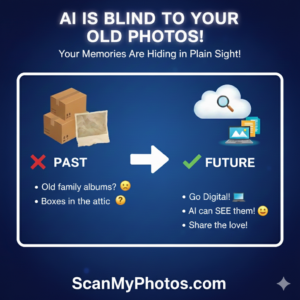From Wikipedia is this helpful information on base-4 and other scanning solutions. For more info, see ScanMyPhotos.com
Photo CD is a system designed by Kodak for digitizing and storing photos in a CD. Launched in 1992, the discs were designed to hold nearly 100 high quality images, scanned prints and slides using special proprietary encoding. Photo CD discs are defined in the Beige Book and conform to the CD-ROM XA and CD-i Bridge specifications as well. They are intended to play on CD-i players, Photo CD players and any computer with the suitable software irrespective of the operating system.
The images can also be printed out on photographic paper with a special Kodak machine. The system failed to gain mass usage among consumers partly due to its proprietary nature, the rapid decline in the costs of scanners, and the lack of CD-ROM drives in most home personal computers of the day. The Photo CD system gained a fair level of acceptance among professional photographers due to the low cost of the high quality film scans. Prior to Photo CD, professionals who wished to digitize their film images were forced to pay much higher fees to obtain drum scans of their film negatives and transparencies. Photo CD is still used by a niche clientele, but it has been replaced by Picture CD, also from Kodak. True PhotoCD discs are still available from a vendor referenced on Kodak’s PhotoCD webpage, but the name is also (incorrectly) used by several vendors for discs which do not meet the PhotoCD standards
.
Designation… Resolution………………Size……Intended typical use
……………………..(px × px)……(Mpx)…..(MB)
Base/16……128 × 192……0.025…….0.07……Preview (index print, thumbnail)
Base/4……..256 × 384……0.098…….0.28……Web
Base………..512 × 768……0.393…….1.13……Computer screen, TV, Web
4 Base……1024 × 1536…1.573……..4.50……HDTV screen
16 Base….2048 × 3072…6.291……18.00…..Print-out up to ca. 20 x 30 cm
64 Base….4096 × 6144…25.166….72.00…..Professional print, pre-press
[source: Wikipedia]




